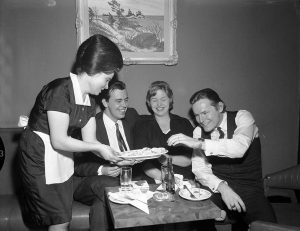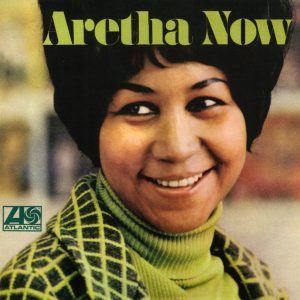HT: DW
We see history far more fully than we hear it. We have plenty of shots of Abraham Lincoln and know precisely what he looked like from when he was a young politician until the last sad photograph of a haggard president taken less than a week before he was shot. But we can only imagine that Lincoln had a folksy and resonant voice because he was a big guy from the backwoods and that’s how he was portayed by Raymond Massey. We don’t know.

The sound of history also loses out in the era before the invention of photography. It’s impossible, really, to describe what something sounds like beyond the broadest adjectives. But painters can create detailed images of everything, from street scenes to battles. In addition to precise likenesses of the subject, portraitists sent sophisticated and nuanced messages via a complex unwritten language. Much was conveyed by the subject’s visage (e.g. looking upward toward the future or downward in a depressed posture), what he or she is holding and the background. There really is no equivalent in music.
Of course, in some cases we have written music and piano rolls. But, for the most part, the gap between our knowledge of what things looked like and how they sounded are great.
If you trace the tree back — and not too far — it is apparent that rock and roll, jazz, the blues, religious music, country music, classical music and just about everything else are deeply related. What is shared between Kenny G, Ornette Coleman, Britney Spears, Aaron Copland, The Ramones and what you heard today in an elevator is far greater than what truly is different. It’s not even close.
A key stop along the way was the music brought to the Americas by from Africa, the Caribbean and elsewhere. Music was a vital element of slave life, from religion to simply surviving the harsh reality of the fields. The McIntosh County Shouters provide some insight into what this music sounded like.
The Georgia group’s members are descendants of slaves who practiced the ring shout. Wikipedia defines the ring shout as…
…an ecstatic, transcendent religious ritual, first practiced by African slaves in the West Indies and the United States, in which worshipers move in a circle while shuffling and stomping their feet and clapping their hands. Despite the name, shouting aloud is not an essential part of the ritual.
The above recording was made by Art Rosenbaum in 1985. It features “Jubilee,” “Sign of the Judgment” and “Move Daniel.” “Sign of the Judgement” was on the soundtrack of the first episode of the first season of “True Detective.”
Here is the first sound ever recorded. In 1996, They Might Be Giants recorded “I Can Hear You” on original equipment at The Edison Historic Site in West Orange, N.J.










Add Comment